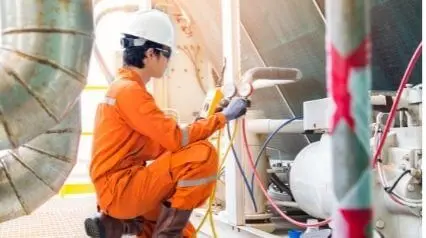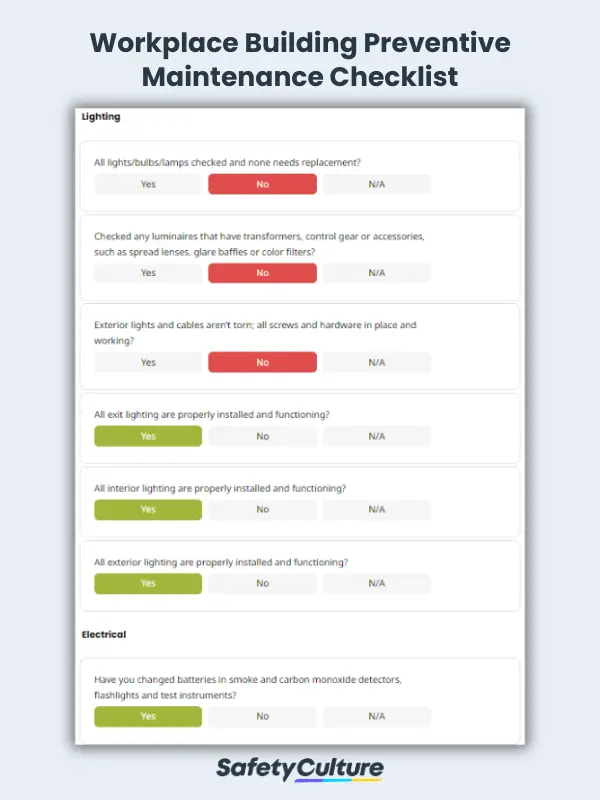What is Preventive Maintenance?
Preventive maintenance is a proactive approach to maintenance that helps prevent unplanned downtime and reduce costs from unforeseen equipment failure. By conducting routine maintenance, technicians ensure that equipment is always in good working condition and that downtime, or any work disruption, is planned and accommodated for ahead of schedule. For preventive maintenance to work, strategic planning and scheduling are key. Additionally, accurate recordkeeping of all inspections, maintenance procedures, service and status reports is vital to any successful preventive maintenance program. These records provide both current and historical equipment data and can help determine if a piece of equipment should be repaired or replaced entirely.
Preventive maintenance processes will vary depending on industry and the type of equipment. Depending on the location, there are often set standards or regulations used to help determine the type of maintenance or inspection necessary and how frequently they should be conducted. In the US, this is under the purview of the American National Standards Institute (ANSI), the organization responsible for ensuring the health and safety of consumers through overseeing the guidelines and regulations that encompass almost every industry.
Types of Preventive Maintenance
The main objective of preventive maintenance is to address problems even before they arise. As such, tasks related to it are done with the purpose of anticipating, preventing, and prolonging the process of equipment breakdown. Different industries operate differently and, as such, use different types of equipment that require different methods of maintenance. Preventive maintenance comes in different types and examples, depending on the worksite and business requirements, but these types fall under four amin categories.
Periodic maintenance
Also known as time-based maintenance, this is conducted on equipment and other assets at scheduled intervals throughout the year. Preventive maintenance scheduled weekly, monthly, quarterly, or annually fall under this category. Periodic maintenance guidelines are based on the manufacturer’s recommendation or mean time between failure (MBTF). The MBTF refers to the average time a machine or piece of equipment operates between stops. Guidelines could also cover failure-finding maintenance (FFM) and risk-based maintenance (RBM) as subcategories.
Performance-based maintenance
Also known as meter-based maintenance, this is conducted when a specific meter reading indicates the need for an asset or piece of equipment to be repaired. Meter readings are based on time-based triggers, which is a frequently used maintenance trigger. Common variables measured by this category of maintenance include hours used, pressure generated, and number of parts produced.
Predictive maintenance
Predictive maintenance is considered the “middle ground” of maintenance; it neither overdoes or underestimates maintenance procedures and does only what’s necessary to keep equipment in good running condition and prolong their lifespan. This is an advanced maintenance method that uses modern technology like sensors to detect anomalies, automatically generate a work order, and assign it to a technician.
Prescriptive maintenance
This is the data-driven approach to preventive maintenance that uses cutting-edge technology to transform gathered data into actionable insights. By leveraging emerging technologies like artificial intelligence (AI) and machine learning, this method of maintenance is able to analyze the condition of equipment over time and assess operational risks and uses that data to provide specialized recommendations that are specific to an organization’s scenario and use case.
Creating a Plan for Your Organization
A recent study shows how a telecommunications company gained a 545% return on investment (ROI) after it implemented a preventive maintenance plan. Although a 545% return sounds good, it comes at the cost of getting buy-in from stakeholders and management teams to implement a preventive maintenance plan that requires a lot of work and an in-depth understanding of operations and the equipment that keeps the business running. Below are the steps that will make the creation of an effective preventive maintenance plan easier:
- Select the assets that should be on the preventive maintenance schedule.
The best way to demonstrate the effectiveness of a preventive maintenance plan is to start with only a few assets, choosing the most critical ones. This will also help the maintenance team transition into a more proactive mindset and workflow.
- Gather all necessary information.
To highlight the ROI of the preventive maintenance plan, you will need to calculate and provide the dollar amount that will be saved for each asset. It’s also vital that you have a complete list of specific maintenance tasks to be performed and their frequency because these may also incur some costs.
- Draft the initial preventive maintenance plan.
After gathering the necessary information pertinent to the preventive maintenance plan, it should be entered into your chosen maintenance planning tool, preferably a computerized maintenance management system (CMMS). A digital tool will help the maintenance team assign tasks, add priority and due dates, and allow for easy collaboration on maintenance tasks and procedures. - Monitor and adjust accordingly.
To ensure that time is maximized during the implementation of the preventive maintenance plan, the maintenance team should monitor how much maintenance work has been done to specific equipment and how many failures, if any, it experienced after the fact. This will help avoid the trap of spending too much time or work on a specific asset when it isn’t needed. - Expand the preventive maintenance plan to cover all assets.
After initial preventive maintenance has proven its significant ROI, getting approval from management will be easier. This will also make the case for the maintenance team when they decide to expand the scope of the preventive maintenance plan. As the plan is expanded to cover all assets within the organization, the ROI also becomes more significant.



